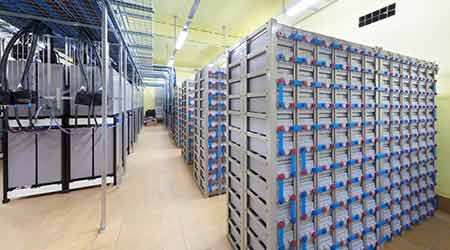Perform a feasibility study to determine total cost of ownership for the appropriate level of power reliability for your facility needs
Power is the commodity we all expect to work 24/7/365. When it doesn’t, it’s a major cause for concern.
Today’s businesses need for stand-by power, whether it’s to keep IT equipment operating, prevent losses of unsaved data, or maintain business operations, according to an article from Building Operating Management on the FacilitiesNet website.
More businesses are exploring stand-by power options to maintain a desired level of reliability, beyond emergency and legally-required stand-by power. Small and large businesses alike realize that a hard shut down not only leads to downtime but can also cause permanent IT equipment failure, resulting in longer outages even when the power comes back on.
Businesses will want to commission a feasibility study that outlines base building power availability and distribution as well as space for potential upgrades prior to signing on as a tenant, in order to determine the costs involved in ensuring the appropriate level of power and reliability.
A feasibility study will include the following total cost of ownership considerations for stand-by power:
• Stand-by power systems equipment costs. This will be a capital line item on the budget.
• Stand-by power systems equipment maintenance. Performing regular preventive maintenance ensures that back-up power will be there when needed.
• Space. Additional stand-by power systems equipment for higher reliability will require more real estate, and thus increase rent.
• Replacement costs. Uninterruptible power supply batteries must be replaced every five to 10 years, and a UPS system, every 15 years.
• Base building upgrades. All or a portion of the cost associated with upgrading base building infrastructure may be tenant responsibility.

 Contaminants Under Foot: A Closer Look at Patient Room Floors
Contaminants Under Foot: A Closer Look at Patient Room Floors Power Outages Largely Driven by Extreme Weather Events
Power Outages Largely Driven by Extreme Weather Events Nemours Children's Health Opens New Moseley Foundation Institute Hospital
Nemours Children's Health Opens New Moseley Foundation Institute Hospital Code Compliance Isn't Enough for Healthcare Resilience
Code Compliance Isn't Enough for Healthcare Resilience Ribbon Cutting Marks First Phase Completion for New Montefiore Einstein Facility
Ribbon Cutting Marks First Phase Completion for New Montefiore Einstein Facility